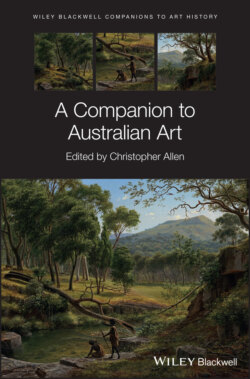Читать книгу A Companion to Australian Art - Группа авторов - Страница 26
3 Public Art Museums in Australia: A Brief History
ОглавлениеGerard Vaughan
The European settlement of Australia began in 1788, when Britain established a penal colony in and around what is now Sydney. Within a few decades large numbers of free settlers began to arrive, establishing themselves in different parts of the country. Victoria, in the south-east corner of the Australian continent with Melbourne as its capital, separated from New South Wales as a self-governing colony in 1851, the same year as vast deposits of gold were discovered in the interior. Melbourne, enriched by gold, prospered rapidly, attracting hundreds of thousands of “diggers” seeking their fortune, drawn not only from Britain but from practically every country of Europe, and many beyond, particularly China.
Whether successful or not, a high proportion opted to stay, to forge a new life in the different Australian colonies and, paralleling experience in the United States, there was a real and very conscious sense of creating a new “European” society in the Antipodes. Right from the beginning – and in Victoria in particular – a growing sense of optimism and ambition, of civic progress and the civic pride which accompanied it, dictated a policy of creating educational and cultural institutions which would drive forward the sense of achievement in every field of endeavour, with ideas about opportunity, learning and self-improvement assuming a particularly important role.
The creation of a system of public museology began at a surprisingly early stage, particularly in Victoria, where the Anglo-Irish judge Sir Redmond Barry, who assumed the role of leading promoter of arts and culture in the colony, drove the establishment in the 1850s of a new public library and then university, followed by the establishment of a museum of art in 1861; this evolved into the National Gallery of Victoria, formally established by act of parliament in 1869. Museological practices in colonial Australia consciously reflected the growth of the new museum culture, including art museums, both in London and in the new, developing industrial cities of northern England; Melbourne and Sydney were regarded as being amongst the great new economic powerhouses of the Empire. Americans are often surprised to learn that the National Gallery of Victoria (NGV), Australia’s first public art gallery – funded by the state following the British model – was established nearly a decade before America’s first major public art museums, the Metropolitan Museum of Art in New York and the Boston Museum of Fine Arts, both established in 1870 and funded through the private sector.
The range and function of today’s system of public art museums in Australia reflects Australia’s three tiers of government: national institutions in the new, planned national capital in Canberra, all opened in the late twentieth century; older institutions in the state capitals1; and regional public art galleries established and supported within a local government system, ranging from large provincial cities to small towns.
Given that Australia only emerged as a politically united, independent country in 1901, when the six individual self-governing British colonies chose a federal model (imitating above all the Canadian model of 1867 with 10 provinces and three territories), its nineteenth century culture of art museology was surprisingly developed and accessible.
